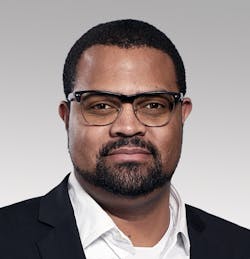If there’s a holy grail in the field of automation, it’s true plug-and-play—or plug-and-produce—capability. But with decades of devices and software created to run on proprietary systems still in operation across industry, the plug-and-produce concept has faced an uphill battle against vendors’ business models until a few years ago when a few large end users began to demand easier interoperability of automation technologies more openly.
Most vocal and active among these end users was ExxonMobil with its support of the Open Process Automation Forum and its accompanying Open Process Automation Standard (O-PAS). A key aspect of ExxonMobil’s participation in the development of the O-PAS standard was its use of nxtControl’s technology in the company’s proof-of-concept testbed for the standard.
Schneider Electric acquired nxtControl in 2017 for its runtime software based on the IEC 61499 standard. IEC 61499 uses event-driven function blocks for industrial process measurement and control systems, allowing distribution of applications across multiple devices and systems, regardless of vendor.
What’s IEC 61499 got to do with it?
As Automation World Senior Editor Stephanie Neil noted in her open automation coverage from the ARC Forum event in June 2022: “[IEC 61499] is not a programming language, but a system design language for distributed information.”
The standard does not define the programming language but does recommend the use of the IEC 61131-3 languages. The function blocks used in IEC 61499 act on local variables only, enabling it to be an independent and self-contained software component. The graphical nature of this function block application is familiar to automation engineers, making it easier for debugging and commissioning.
The IEC 61499 standard is core to the efforts of UniversalAutomation.org— an independent, not-for-profit association of users and vendors managing the implementation of a shared source runtime execution engine based on the IEC 61499 standard. UniversalAutomation.org seeks to provide the basis for “an ecosystem of portable, interoperable, plug-and-produce solutions to create an entirely new category within industrial automation,” according to the organization.
Schneider Electric agrees that the IEC 61499 standard provides the groundwork for enabling “plug-and-produce” automation technology components, leading it to help develop and support UniversalAutomation.org.
John Conway, president of UniversalAutomation.org, said, no one company can deliver everything needed for industry’s interoperable digital transformation, but UniversalAutomation.org helps make this possible by delivering an implementable version of the IEC standard for integration across multivendor platforms.
Insights from ExxonMobil, Intel, and Wood PLC
At the Schneider Electric Innovation Summit 2022, David DeBari, control systems engineering associate at ExxonMobil; Brad Bonnette, technical director of applied intelligence at Wood PLC, a consulting and engineering company targeting the energy and materials markets; and Richard Kerslake, general manager of industrial control and robotics at Intel, spoke about their support for UniversalAutomation.org.
DeBari added that he is also a strong advocate for the hardware and software separation abilities of IEC 61499. “I’ve been using the 61499 runtime for years and it’s proven to be very capable. [At ExxonMobil] we started proof of concept tests with it back in 2017 and we’ve tortured it ever since. We want to know if we can break it.”
Bonette added that industry should not view the runtime engine as the value of IEC 61499. “It [the runtime engine] does its job and I don’t have to think about it. The value is in using embedded intelligence in software control. It allows us to focus on high value add components, like increasing the level of intelligence applied to process control instead of having to rewrite it for every hardware platform. You shouldn’t have to think about the hardware platform when you buy a control application.”
Kerlsake said Intel is working with Exxon and Schneider Electric on a new generation of Distributed Control Nodes (DCNs) using IEC 61499. These DCNs are field-level edge devices capable of control functions and running applications. He added that they’re also focusing on Linux-based edge controls for industrial applications.
Beyond control applications, Bonnette believes IEC 61499 can also be used to support the next generation of cybersecurity through the development of apps that include authentication and verification principles.
Compliant hardware and software
Having the IEC 61499 runtime engine supported broadly by industry was a first step. The next step, of course, is having compliant hardware available on the market for broad implementation.
Though UniversalAutomation.org was launched less than a year ago, several available automation hardware devices that support IEC 61499 include:
- Advantech’s UNO 430 ruggedized industrial PC;
- ESA Automation’s EW420 ruggedized industrial PC;
- Flexbridge’s IceBlock intelligent wireless dnode;
- Stahl’s IS1+ remote I/Os;
- Schneider Electric’s Modicon M251 machine PLC, Modicon M580 process PLC; and ATV variable speed drive card.
On the software side, Schneider Electric offers its Ecostruxure Automation Expert, which uses IEC 61499 to decouple hardware and software to provide one common language to connect all systems. According to the company, Ecostruxure Automation Expert’s native IT/OT convergence via IEC 61499 helps it integrate with advanced IT applications, tools, and technologies for industrial use. And its asset-centric design with pre-developed asset models can be used to make it easier to reuse portable automation objects.
“When you start looking at this, you realize the control paradigm is going to change,” said DeBari. “You can break the 61499 into parts and run them in different places. We made each compute node do only one thing in a series of devices totaling 38 I/O points and 56 computers in a PID loop and it worked. And we’ve run it at 1 ms and below using general purpose compute and network capabilities. This is why we’re confident it can run our chemical plants that have highly energetic processes if not managed properly.”
The video below, captured at the Schneider Electric Innovation Summit 2022, further explains UniversalAutomation.org and its connection to Schneider Electric technologies.





